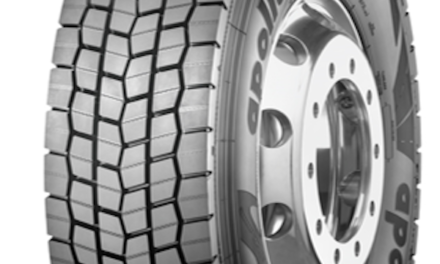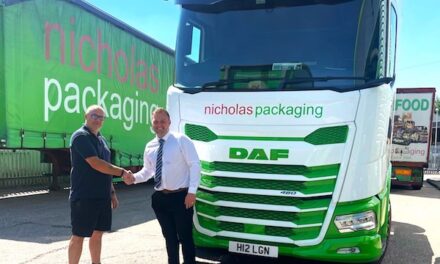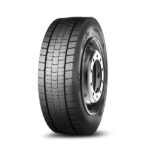Loading practices often centre around efficiency. While shortening driver wait times is important, warehouses must also pay attention to cargo security.
Objects falling from vehicles have caused as many as 22,000 collisions in a single year. Even if such incidents do not result in any injuries, shifting cargo in transit can damage shipments or endanger teams unloading the lorry. Consequently, safe trailer loading practices are a must. Here are six to consider.
1. Use the Right Vehicle
One simple cargo safety solution is to choose vehicles carefully. Using a trailer too big for a given load leaves more room for packages to slide around in transit. Similarly, some vehicles may not have the appropriate centre of gravity or shock absorption to carry heavier payloads.
Artificial intelligence (AI) is useful here, as AI models can determine how best to split loads between vehicles for maximum efficiency and safety. However, most organisations miss the opportunity — 89% of transport and storage businesses say many current AI use cases don’t apply to them. AI cargo optimisation software is already available. Businesses must only recognise the possibilities.
2. Balance Load Weight
Safe trailer loading is as much about how a team places goods as what vehicle they place them in. While space efficiency is a crucial consideration in this regard, workers must also consider the load’s weight distribution and its impact on safety.
Heavier items should form the bottom of the stack to keep centres of gravity lower. Similarly, placing more weight toward the lorry’s steering axle will ensure a smoother driving experience to minimise unnecessary movement. However, teams must stay within each axle’s maximum load limit, distributing the rest of the cargo evenly across the rest of the trailer.
Once again, AI planning software can make these decisions easier. However, businesses that cannot reasonably deploy such technology can still practise safer loading by reviewing lorry weight limits and balancing cargo accordingly.
3. Bundle Smaller Packages
Some shipments will consist of multiple smaller items instead of a few large products, and this cargo carries special requirements. While lighter packages may seem less dangerous, they may be prone to sliding. Bundling them into larger, controllable groups is the solution.
Warehouses can use palettes, crates and similar structures to group similar cargo into manageable bundles. However, they must not stop there. After palletising each load, workers must secure them within the palette to prevent items from shifting in transit.
Stretch film is an ideal option here, as it covers more of the load, applying even pressure across all packages. It also eliminates moisture and dust penetration, protecting the goods within and ensuring such buildup doesn’t encourage slippage.
4. Use Force-Fit Loading
Force-fit loading is a similar technique to improve cargo security. This practice involves lashing palettes to the trailer floor to secure them in place. The downward force of the lashing straps increases friction between the palette and loading surface, minimising slippage risks.
As simple as the method seems, it requires attention to a few details. First, teams must use enough lashing straps to ensure even pressure across the entire load. More stress on one side than others may squeeze smaller packages out, increasing rather than decreasing slippage.
Force-fitting may also introduce damage risks for sensitive goods. Using slip mats underneath palettes can help by reducing the amount of downward pressure needed.
5. Consider Form-Fit Loading
Alternatively, logistics businesses can employ form-fit loading. Unlike force-fitting, which centres around downward force, form-fitting capitalises on lateral force to secure objects. Teams fill a trailer so there are no gaps between individual components of the load, leaving no room for anything to shift.
The advantage of form-fit loading is that it requires little to no lashing straps, as the items’ own weight will keep each other in place. As a result, it protects sensitive goods and minimises material costs. However, some shipments may require stuffing empty palettes or cushioning between gaps, which can counteract that benefit.
One downside to form-fitting is that it requires filling a trailer to the brim, which can introduce unloading risks. Material handling automation is a potential solution, as it removes employees from hazards, but not every facility can afford such systems.
6. Combine Multiple Techniques
In many cases, the best way to ensure cargo security is to combine techniques instead of choosing one over the other. A hybrid approach can compensate for individual methods’ shortcomings while maximising the benefits.
Using both form-fitting and force-fitting, for example, will secure loads vertically and horizontally. Teams can fill a trailer as much as possible and use diagonal lashing for added security while reducing the need for extra cushioning. The lashing will also minimise safety hazards when unloading. Doing so after right-sizing the lorry and balancing load weights will yield optimal results.
Safe Trailer Loading Is Essential
When more organisations practice safe trailer loading, road accidents and in-transit product losses will become less common. Those advantages are hard to overlook as businesses face heightened pressure to reduce costs and ensure safety amid rising demands. While there is always room for further optimisation, these six strategies provide an excellent starting point towards that goal.
Emily Newton









